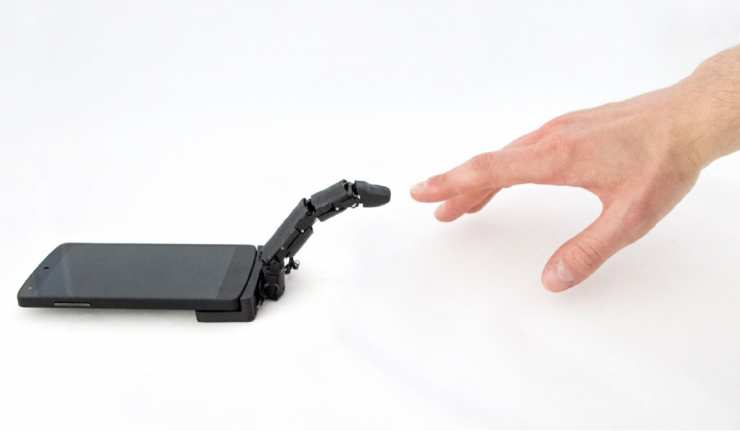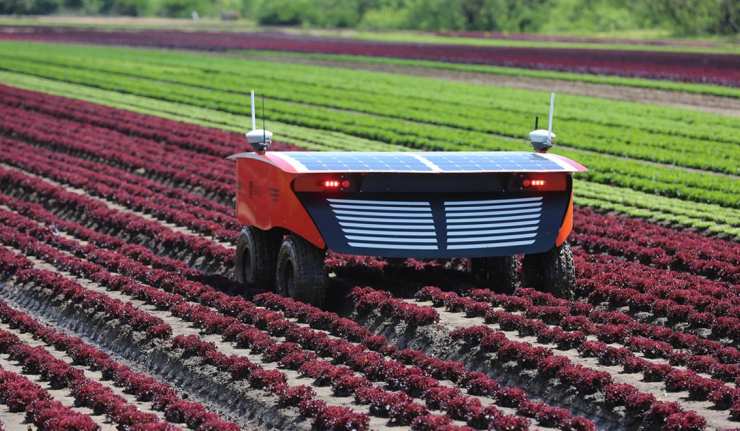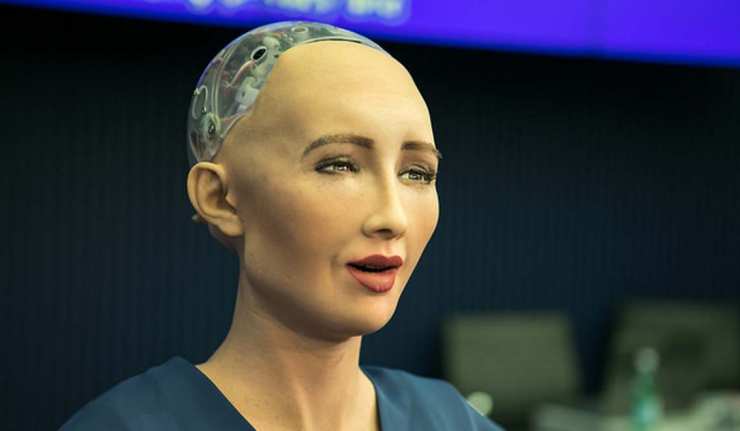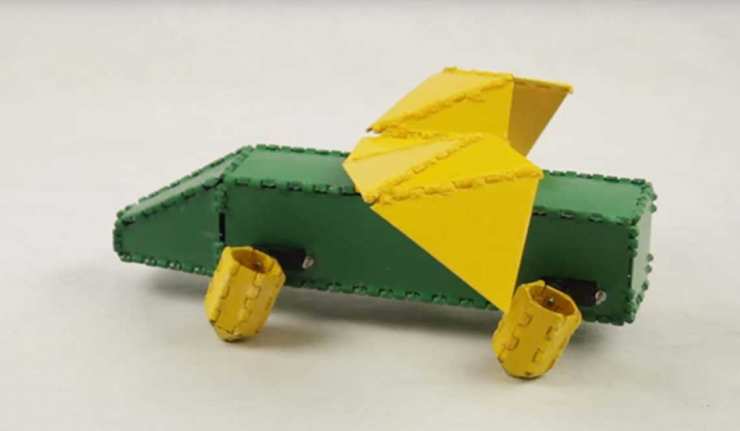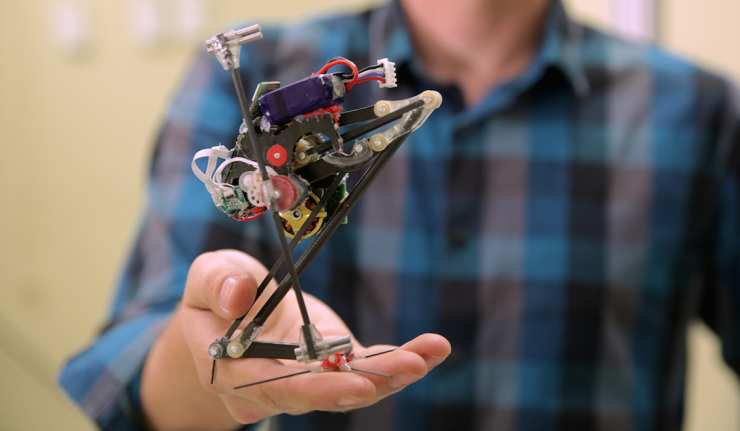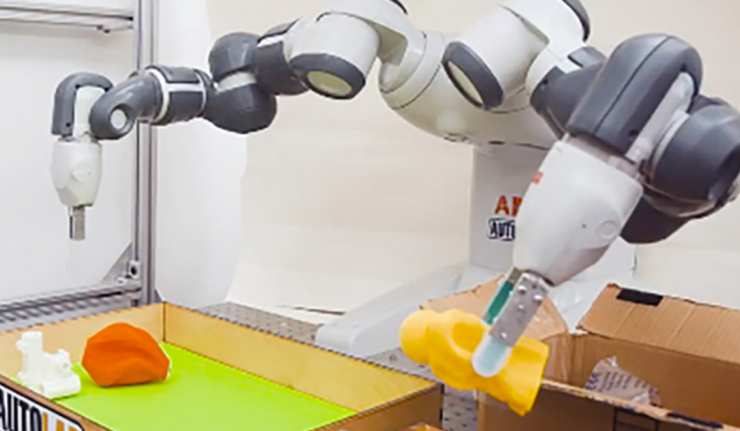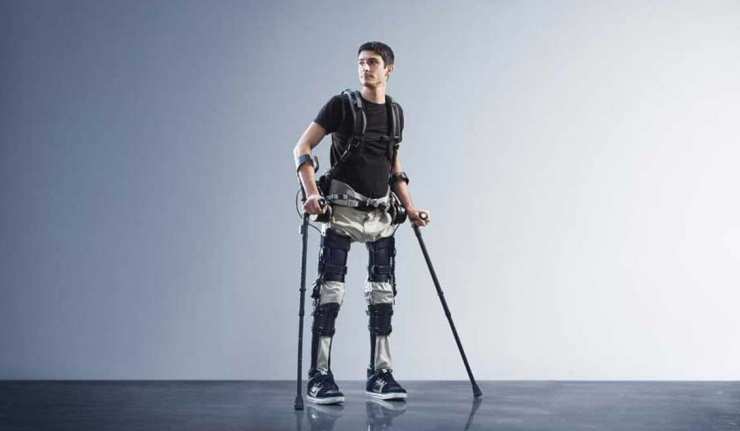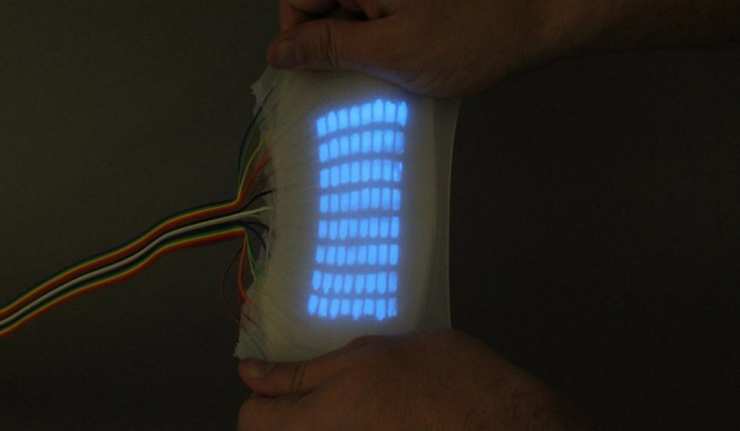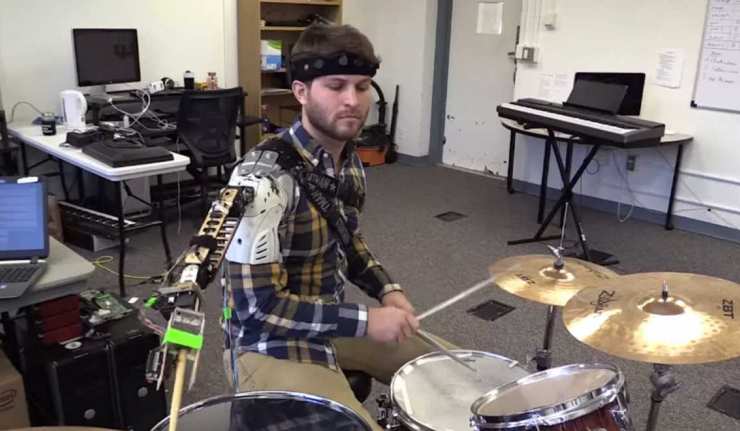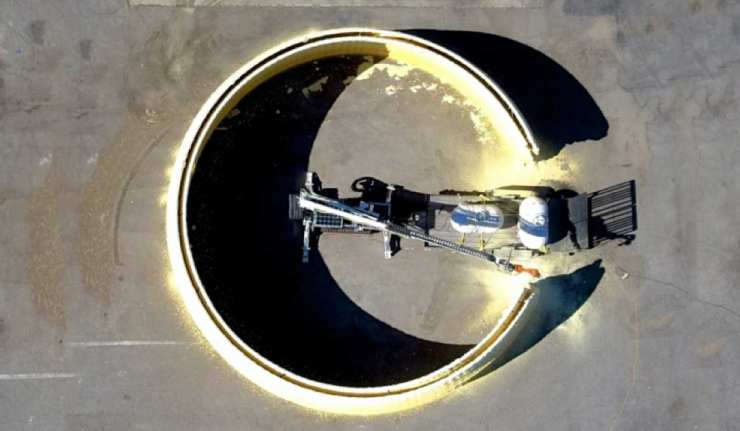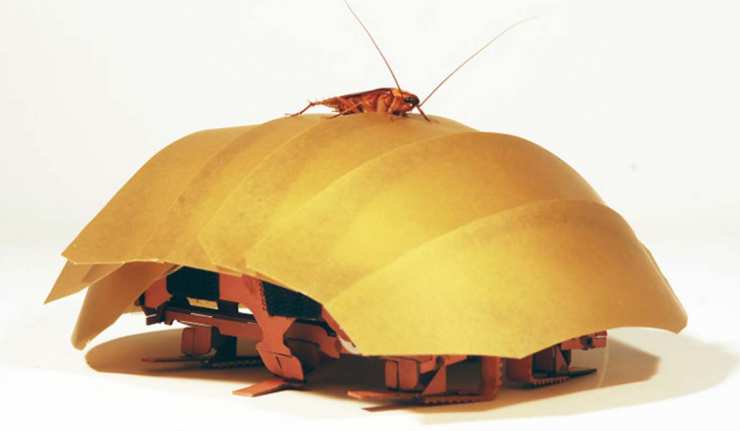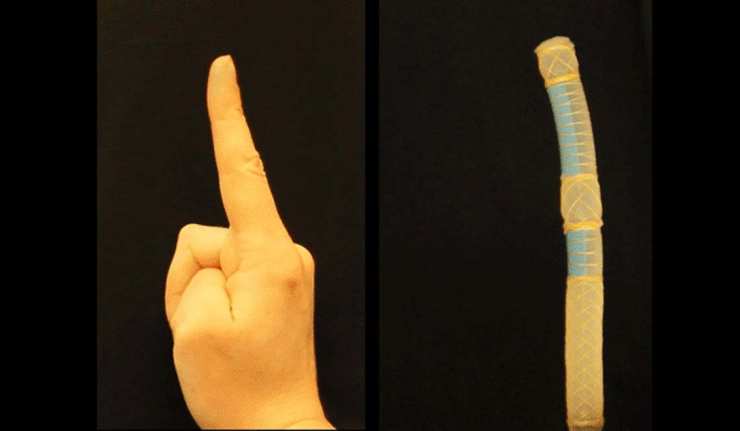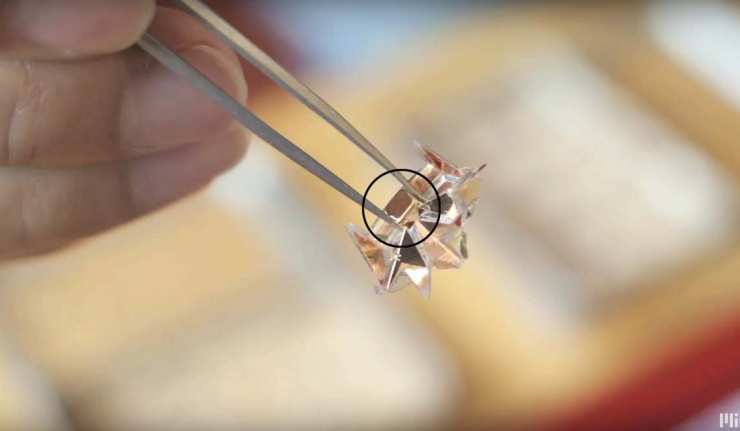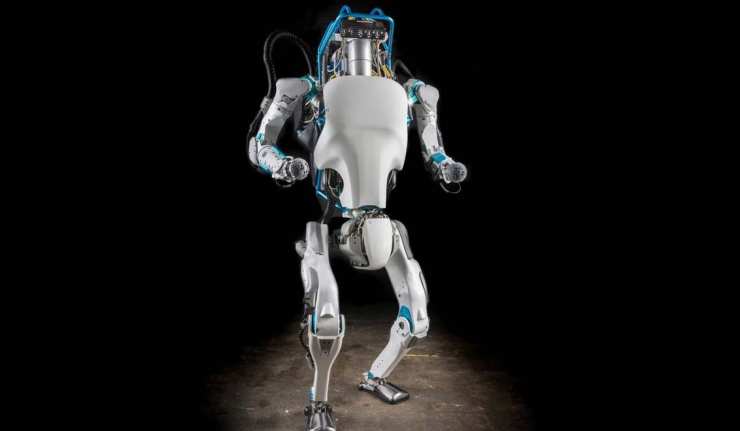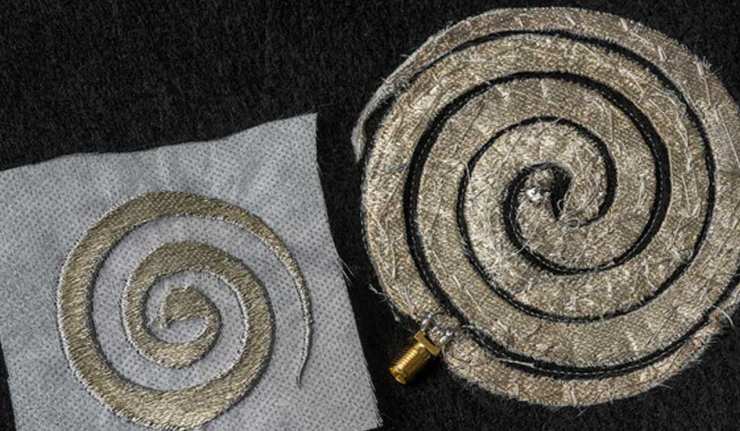Robotics
Era Of ‘Smart’ Touch: This Phone Accessory Can Literally Touch Its User Back!
Most modern smartphones have multi-finger touch sensitivity. This means a device can distinguish as many as ten individual fingers when users are touching its screen. But what would a phone do with a finger of its own?
A Ph.D. researcher from France decided that this was an appropriate avenue to explore. The result was MobiLimb, a device that begins in a micro-USB interface so that it plugs into a typical Android phone and ends in a triple-jointed, straight appendage.
These Robots Can Redefine The Future Of Farming, Say Sydney Researchers
Farming in the 21st century is becoming more and more automated, as time goes on. In fact, it seems that fully autonomous agri-bots are poised to take on at least some of the grunt-work around the farm. Are these robots ready to form the labor force of the future farm? Can they really take on the volumes of work involved in raising enough crops to feed a nation? Finally, will this form of AI take jobs from human workers?
Sophia the Robot Speaks at the UN And Is Now A Citizen of Saudi Arabia
Artificial intelligence has reached unbelievably great heights, going so far as new-age robots can, if not completely take over jobs, at least challenge the human mind and psyche, as some researchers believe.
Robot Origami: How MIT Scientists Plan to Bring Recreational Robotics to the Masses
Robots are becoming more and more common in our everyday lives. Many people may own, or aspire to own, high-end toys that, while they may not be perceived as robots, fall into that category. These include quadcopter drones and AI-powered, remote-controlled toys such as the Sphero™ line of products. Robots also serve practical ends, in the form of automatic cleaning machines including Roombas™. As robots become more and more a part of normal life, the ability to program, control and even design them may be an increasingly useful and necessary skill.
Meet Salto: The Most Vertically Agile, Wall-Jumping Robot
There is always room for improvement! Using this motto, roboticists have taken on the challenge of producing advanced robots with unique characteristics and functionalities. In order to achieve this aim, researchers are employing specialized tools, and building models specially to benefit areas of healthcare, medicine and the rescue operation domain.
Vertical Farms in Cities are the Future of Urban Farming
An estimated 23% of the world’s population now live in cities, far from the reaches of farmland, making access and the transport of fresh food an everyday struggle in terms of cost, labor and unpredictable weather conditions.
Robot ‘DexNet’ is the Most Nimble of Them All
It has been established that robots can easily perform tasks that we give them. But, it was noticed that the digits of their robotic arms were missing a certain dexterity when the bots held or picked up objects with odd structures and those of smaller configurations, sometimes squashing or destroying them.
Robotic Exoskeleton for Multiple Sclerosis
Scott Holland of Manaunk, Philadelphia made a promise to walk his daughter down the aisle for her wedding. In his youth, Mr. Holland was an avid runner and cyclist, but when his daughter was age two, he was diagnosed with multiple sclerosis. His mobility declined and by the time the wedding arrived, he hadn’t walked in over 20 years. To the surprise of the 200 guests, Mr.
Super Elastic Electroluminescent Skin
Attempting to test the behavior of soft robotic systems beyond boundaries, a group of aerospace and mechanical engineering researchers led by Rob Shepherd have created electroluminescent “skin”. This, by replicating the model of cephalopods who possess natural skin stretchability and color changing organs for their protection as in camouflage, visual display and communication.
Robotic Third Arm Brings Music To The Next Level
What would you do with a third arm? Some personal favorites would be using a phone while typing on a computer, holding a mirror while cutting my own hair, and doing push-ups while eating a donut. While the idea of me doing push-ups is implausible, having a third arm that is fully controllable and articulated is very real. Investigators at Georgia Institute of Technology have created a robotic third arm that attaches to a subject’s shoulder and responds to human gestures.
MIT Made a Robot Printer That Can Build a House in a Day
Given the current lack of housing across many countries in the world, it’s not surprising that the industry is looking for fast and efficient alternatives to traditional building techniques. These traditional techniques are generally slow, costly and require a large amount of labor. Construction is also a dangerous industry, with many work-related deaths per year.
Meet CRAM: The Advanced Robotic Cockroach
Periplaneta americana, commonly known as the American cockroach, one of the most dreaded pest of them all, has now crept its way into robotic studies, thankfully far from the reaches of our homes!
Soft Robots Mimic Biological Hand Movements
When robots arrive, they do so in style! We stand witness to some of the greatest technological inventions in history, an area of pioneer research being the use of robotics in medicine and healthcare. The aim is to enhance quality of living by means of artificial intelligence. Non-rigid or soft robots have certainly evolved over generations of trial and error, and taken precedence over traditional robots due to their low weight, customizable nature, their capacity to easily mimic human activity and in most cases, their awareness to the environment.
Bio-friendly, Ingestible Origami Robot
Kids accidentally swallow inedible objects a fair number of times and parents reflexively panic hoping for it to pass through the body soon and not get caught in the esophagus or gut, the waiting raising their anxiety levels! The United States records about 3,500 cases every year of hazardous button batteries, found in toys, watches etc, that are being ingested resulting in a detriment to the consumer’s health like chemical burning of tissues and sometimes even death.
Advanced Humanoid Robot, Atlas, Finds Application in the Future
Remember the adorable droid C-3PO from the Star Wars movies? Envision something along similar lines and you have ‘Atlas’. Sci-fi is no more just a fantasy!
Computers in Our Clothes: The Functional Textile
What if your clothes doubled as a modern computer? Indeed a thought provoking idea that is on its way to becoming reality and truly defining the term ‘wearable electronics’!
The Jazz-Playing Robot: The Future of Technology-Enabled Arts
When thinking of arts, words like tradition, culture, inspiration, feelings and talent come into our mind, and are automatically linked to the human condition. For Human Computer Interaction (HCI) researchers, performing arts translates into just another means to learn, evolve, express oneself and… communicate with an artificially intelligent entity, either a robot or a software agent.

